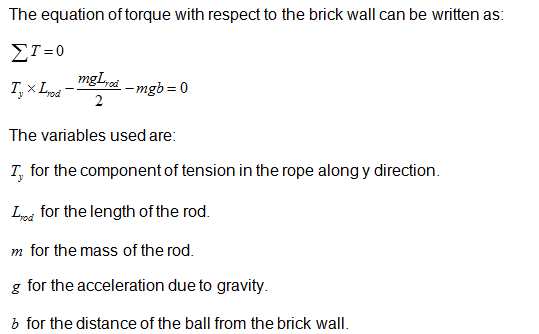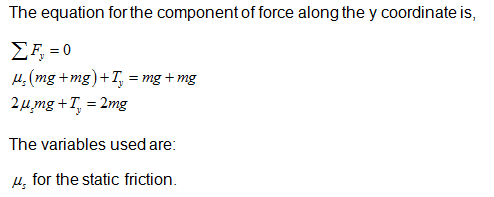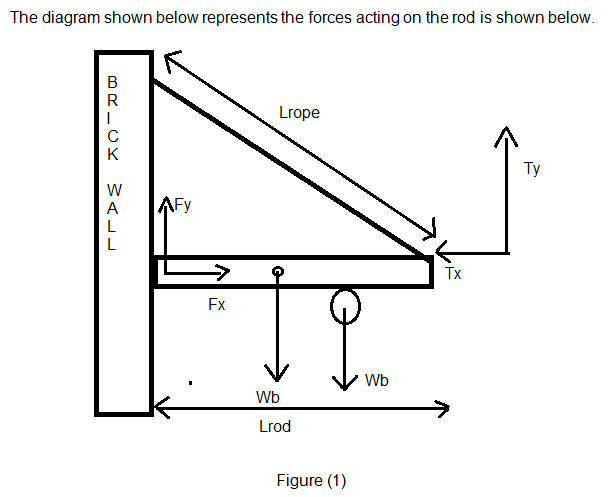A horizontal rod of length 429 cm is held aloft by friction against a brick wall on one end and on the other end by a rope of length 584 cm, which itself is attached to the brick wall directly above where the rod touches the wall. The coefficient of static friction between the wall and the rod is 0.458. A ball of the same weight as the rod hangs from the rod. Find What is the minimum distance ball must hang from the wall in order to the rod to stay stable?
Rotational Equilibrium And Rotational Dynamics
In physics, the state of balance between the forces and the dynamics of motion is called the equilibrium state. The balance between various forces acting on a system in a rotational motion is called rotational equilibrium or rotational dynamics.
Equilibrium of Forces
The tension created on one body during push or pull is known as force.
A horizontal rod of length 429 cm is held aloft by friction against a brick wall on one end and on the other end by a rope of length 584 cm, which itself is attached to the brick wall directly above where the rod touches the wall. The coefficient of static friction between the wall and the rod is 0.458. A ball of the same weight as the rod hangs from the rod.
Find
What is the minimum distance ball must hang from the wall in order to the rod to stay stable?
Basic Details
The torque and the force that are acting on the body is zero at the position of equilibrium. Take the moment from point of contact of the rod from the brick wall to determine the value of the tension in the rope.
Take the component of force along x and y direction to zero to determine the position of the ball with respect to the brick wall.


Calculations

Step by step
Solved in 3 steps with 4 images









